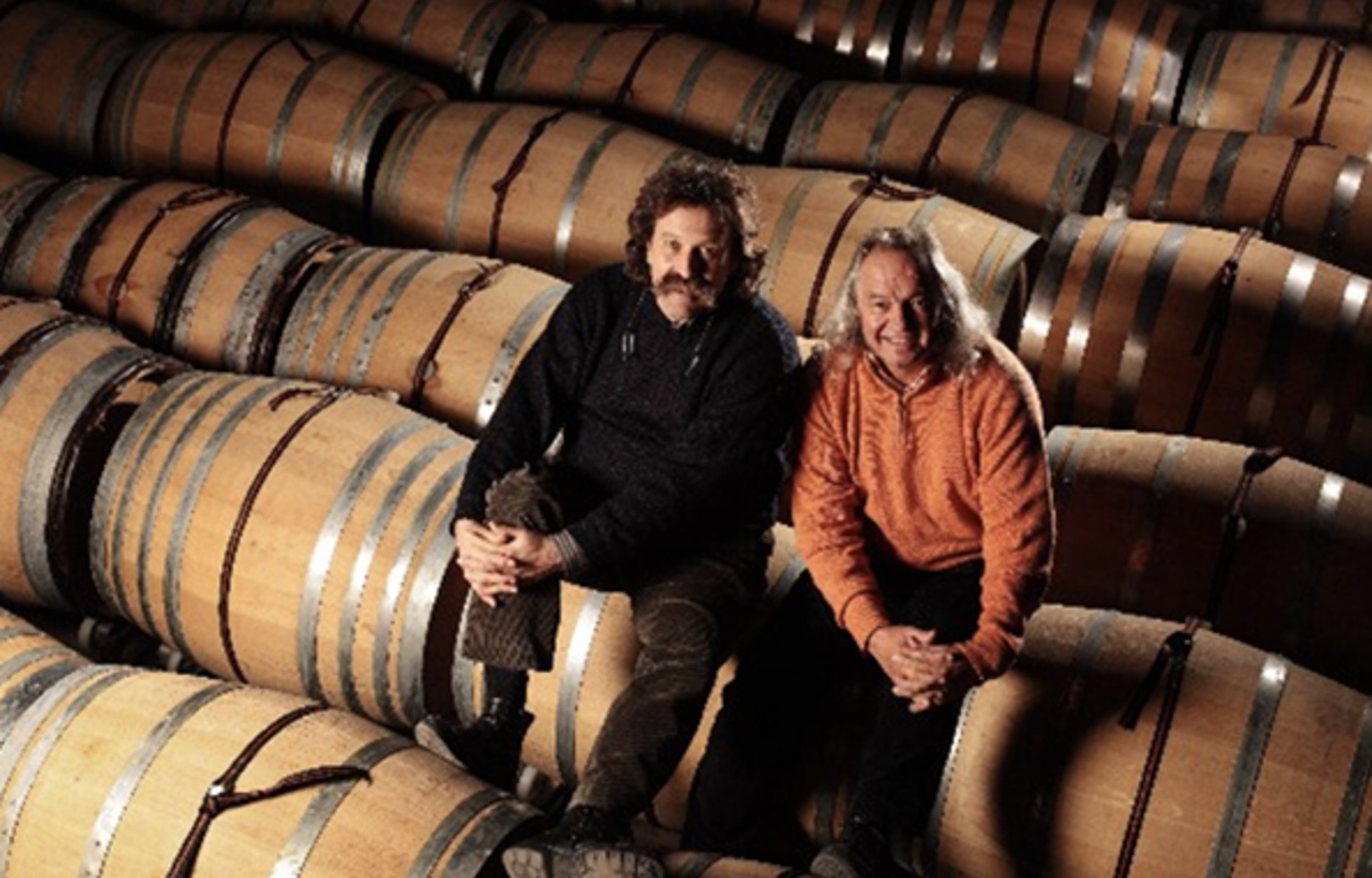The Poetic Nature of Pojer e Sandri
Pojer e Sandri barrels
Pope John XXIII once professed that, “men are like wine – some turn to vinegar, but the best improve with age.” For Federico Sandri, a bright-eyed, baby-faced 32-year-old, this papal observation is more of a remark on maturity. His family has been growing grapes along the Adige river in the Trentino region of northern border of Italy since 1975—at Pojer e Sandri, they age both wine and vinegar.
The history
Federico’s father, Fiorentino, and a good friend of the family, Mario Pojer, settled in the small town of Faedo, with the hope of protecting and proliferating the plethora of native grape varieties there. Fiorentino’s grandfather owned agricultural land, raising cows, rabbits, chicken, and some vines to make some wine, and grappa—just for himself. When his grandfather died, Fiorentino took over the property. Pojer had just graduated enological school at the Istituto Agrario of San Michele all’Adige, and the two decided to grow grapes together. They were already surrounded by the indigenous Schiava, an underappreciated local red grape, and native Nosiola, a local underappreciated white grape. When he was a kid, Pojer’s father had a winery in Salorno, a small town just north of Faedo — both of them are on the border between Trentino and Alto Adige — Faedo is the last town of Trentino, Salorno is the first town of Alto Adige on the Adige Valley. Since Faedo didn’t have an appellation of its own, there was plenty of room for interpretation.
Pojer e Sandri vineyards
The vineyards
With about a hundred acres of vines in three distinct areas, Faedo, Cembra, and Grumes, Pojer e Sandri uses the cool mountain breezes coming down from the Alps to their advantage; cool air coming off Lago di Garda yielded bright, fragrant fruit. Faedo, the 40-acre heart of Pojer e Sandri, sits between 600- and 2000-feet altitude in limestone hills where the Müller-Thurgau grape thrives. Cembra, a little lower on the slopes, offers spectacular Pinot Noir vines. Riesling, Sauvignon Blanc, Blaufränkisch, Zweigelt and other white and high-altitude varieties are speckled about the rest of the land. This all goes to make over 300,000 bottles of 60 different products, from wine to verjus to brandy to grappa— 5-10% of which is vinegar, in a dozen different varieties!
Vinegar making has always been a part of Pojer & Sandri’s sustainability efforts, leaving no waste behind, but it wasn’t until 25 years ago that vinegar became a bigger part of the business. It is stated in Italian law that wine and vinegar must be made in separate locations, with enough distance in between so that the acetobacter from the vinegar doesn’t turn wine, well, into vinegar.
Pojer e Sandri acetaia
The factory
The company restored an old house in the middle of a vineyard in Cembra, turning the top floors into a five-room bed and breakfast and the basement into a vinegar factory. “I remember when I was a kid, there were apricots, Bartlett pears (Williams), rowanberries, black currants …”, says Sandri, when reminiscing of the fertile land — and as non-interventionists fruit, much of the original trees and bushes are still there. Grapes and fresh orchard fruit are picked and pressed without the addition of alcohol or sugar, which allows for the inherent flavors to carry through the vinegar making process. Barrel temperatures are kept at an ambient 64-77F, allowing the contents to slowly ferment for about a year, resulting in vinegar that is quite bright at 6- 6.5% acidity, evocative of fresh fruit.
Pojer e Sandri vinegar bottles
The vinegars
Sandri’s signature red wine vinegar is made from a blend of Zweigelt, Negrara, Groppelo, and Pinot Nero grapes. It’s medium-bodied, and very much like a great Pinot Noir, with notes of dried fruit (apples, raisins) and fall’s forest floor. These vinegars are champions of autumnal bitter green salads or used to deglaze slow-roasted meat. Pojer e Sandri’s white wine vinegar, which blends Riesling, Kerner, Incrocio Manzoni, Sauvignon, and Pino Bianco, is impressively aromatic and floral, with a citrusy tang.. It best suits tender green salads and can even be used in pickling or preserving vegetables. Sandri’s family uses their quince vinegar with raw squash, cherry vinegar on a raw tartare, but doesn’t deter your family from creating new food traditions — as his once did and continues to do.
Pojer e Sandri family photo





